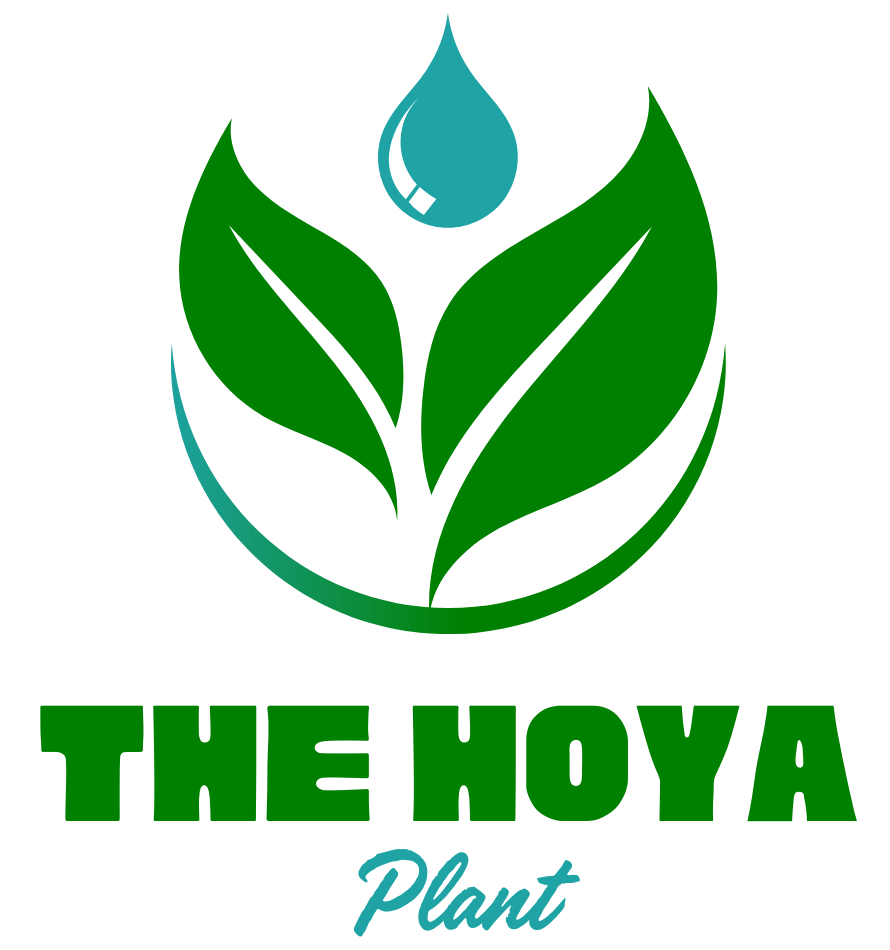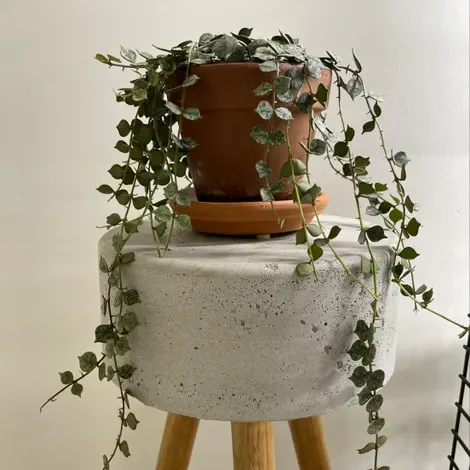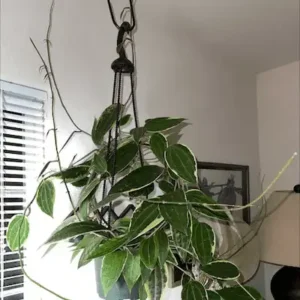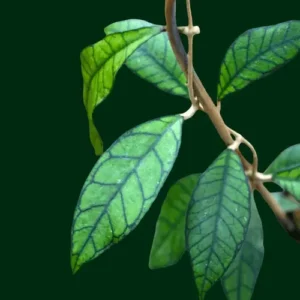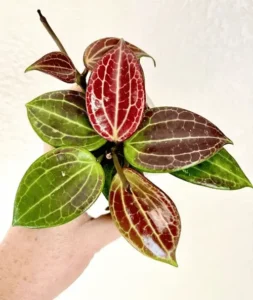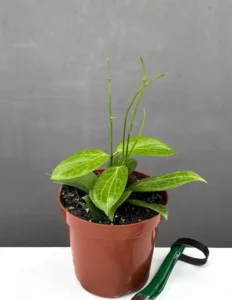Description
Hoya curtisii is a miniature plant. This form of curtisii has small round olive-green leaves mottled with grey. It is also known as the ‘Hoya Tiny Leaf Porcelain Flower’ and has sparkly silver colors on the green leaves. It is a tropical epiphyte that is adapted to grow in humid jungles. In the wild places, you would see mounds of hoya curtisii. It is smaller than other typical hoyas. Moreover, it is also called a miniature trailing hoya.
Properties
Scientific name: Hoya curtisii King & Gamble
Common name: Fung wax flower, Hoya Tiny Leaf Porcelain Flower
Light requirements: Bright, indirect sunlight
Temperature requirements: 60°F and 85°F(16°C – 29°C)
Propagation: by stem cuttings in water or soil
Facts
Origin
It is native to the Philippines, Thailand, Borneo, and Malaysia, this petite hoya is a testament to the rich biodiversity of its tropical habitats.
Climbing epiphyte or lithophyte
It is a climbing epiphyte or lithophyte and grows primarily in the wet tropical biome.
Leaves
It has small, fleshy leaves speckled with silver—a true spectacle of nature. It’s particularly noted for its trailing vines which make it an ideal candidate for hanging baskets or as a tabletop display with a cascading arrangement.
Flowers
This miniature plant blooms with clusters of star-shaped, pale pink flowers that emit a light, pleasant fragrance, adding a touch of elegance and charm to any indoor space.
Hoya Curtisii Flowering And Blooming Tips
Provide the right conditions
-The foliage of hoya plants is gorgeous and when you get flowers it’s special. If you want to get your hoya to flower, provide the right conditions for blooming. Sometimes market -nutrients also matter.
Light requirements
-Sometimes hoya is not blooming due to not enough light. In this case, just increase the brightness of the light to unlock the hoya to bloom.
Provide Cold periods
-Stress is good for flowers as it encourages blooms such as cold periods or bare patches such as the popular hoya carnosa often require a short dry period to trigger flowering such as a month of drying out.
-If your hoya is not growing leaves, stay on a good vegetation fertilizer. Additionally, provides the best food at the right time.
Improve the underlayers
-Improving the underlayer is often suggested if your hoya is not blooming.
Don’t remove hoya flowers after blooming
-Don’t remove hoya flowers after blooming, they will drop off themselves. However, it’s necessary to leave the peduncle on.
Bud blast solutions
If your hoya buds dry up or die without flowering ( bud blast). There are many possible fixes for it that you should follow
-First, keep conditions the same.
-Secondly, do change fertilizer ( shifting from a nitrogen-rich foliar fertilizer to a bloom fertilizer is usually recommended). Moreover, for flowers to bloom, several minerals are needed. A plant’s attempt to blossom may be hampered or interrupted if foliar fertilizer is continued.
-Thirdly, check your choice of fertilizer and the dilution rate for foliar feeding, several collectors have reported success when applying their bloom fertilizer as a foliar spray to promote blooming.
-Fourthly, bud blast is also due to calcium deficiency, even though it’s an important nutrient for hoyas. However, just check your fertilizer label as most people don’t check.
-Fifthly, Buds may die due to becoming overly dry or remaining too long dry. However, turn up the watering a little bit instead of overhead watering.
-Sixthly, grab a hygrometer to check the temperature and humidity as it’s necessary for better growth. However, it depends upon your hoyas preferences.
-Lastly, time and temperature are also essential. Give a proper time to grow as some hoyas take less time to grow from blooms to flowering and some take too much time. Temperature range is also important to check temperature lows and highs and if suitable grab a thermometer to keep an eye on conditions.
Common Problems With Hoya Curtisii
Hoya plants, often called wax plants, are loved for their striking foliage and sweet-smelling flowers. However, though generally easy to care for, they can encounter a few typical issues that may hinder their growth. Overwatering, lack of sufficient light, and pest problems are some of the most frequent challenges. Root rot, leaf yellowing, and insect infestations like mealybugs can all arise if the plant’s needs aren’t properly met. Recognizing these common problems and knowing how to resolve them is key to ensuring your hoya curtisii stays vibrant and healthy. Here is a list of common problems related to this miniature plant.
Detailed analysis of these common problems
Here is a detailed analysis of these common problems.
Dark spots
Dark spots on the leaves are fungal infections caused by overwatering might be caused by temperature fluctuation. The plant was harmed by these dark patches as they progressively formed.
Aphids, spider mites, and mealybugs
-The hoya plant is harmed by mealybugs, spider mites, and aphids. Additionally, root rot may result from the container holding too much water if the plant is not kept root-bound. Additionally, overwatering may prevent the plant from flowering.
-Thinning, brown, or wrinkled leaves can mean that the plant is allowed to dry too much between watering.
Mold and fungus
-Mold and fungus which are the silent invaders discoloration or powdery spots on leaves are also common problems. However, it is also susceptible to a range of common ‘sap-sucking’ houseplant pests including aphids, mealybugs, scale and spider mites.
-Hoya fungal leaf spot and other fungal or bacterial diseases commonly affect this type of plant which is caused by brown spots on the leaves.
Root rot
Root rot is a common disease caused by overwatering and poor drainage.
Yellow or wrinkled leaves
Leaves turning yellow due to overwatering and lack of light.
Wilted, wrinkled, or shriveled leaves
Wilted, wrinkled, or shriveled leaves are frequently signs of a serious water deficit. Moreover, water your plant adequately to ensure healthier development in the future.
Other common problems
-Yellowing, leaf spots, excess water on top leaves, sooty mold (develops on the leaves’ sugary, sappy leftovers), light and temperature angles, scale insects, pests. However, root rot is a silent killer, and occurs when the soil is too moist.
-Among the insects drawn to these species are whiteflies. Root rot and leaf drop can result from overwatering. These are all the common “sap-sucking” insects in the garden.
-Caterpillars, spider mites, leafhoppers, yellow edges, dark blotches, leaf beetles, mealybugs, thrips, and aphids are also common problems.
Solutions
Although hoya plants are relatively low-maintenance houseplants, they can suffer several common issues, including pests, overwatering, underwatering, and low humidity. Many problems can be avoided by closely monitoring their environment and care requirements. However, recognize issues early on and make changes to restore your hoya’s health. Moreover, Hoya curtisii creates lovely, blooming flowers when given the proper care.
Detailed Analysis of solutions
Here are some general solutions to care for this miniature plant. A detailed analysis of the solutions is described in the section below for better growth of your miniature plant. However, these solutions greatly benefit those who are hoya plant lovers.
Choose the suitable pot
-First, choose the right pot which is very important, regular plastic containers are best. However, choose a manageable pot according to the hoya size.
-Secondly, choose the material that draws moisture from the soil as hoyas are badly affected by overwatering and root rot.
Leaf spots, dark spots, and root rot
Solutions
-To prevent leaf spot infections, avoid overwatering, ensure the hoya curtisii (miniature plant) has good air circulation, and keep leaves as dry as possible. Maintain proper pruning of your shrubs and trees to allow for adequate canopy ventilation.
-In case of dark spots apply cinnamon and other fungicides, minimize watering, and let your plant grow. For better growth, longer watering intervals are a must for these beautiful houseplants.
-Make sure the soil drains well and the plant isn’t overwatered to avoid root rot. Hoya curtisii doesn’t like wet roots.
Wrinkling, yellowing, and falling off leaves
Solutions
-To prevent yellowing, wrinkling, or dropping off leaves and scale insects, isolate the plant and spray it with fresh water and rubbing alcohol.
-To avoid yellowing or wrinkled leaves, the best way is to water the plant moderately.
-Additionally, provide enough humidity and light to your houseplant for enough growth.
-Moreover, indirect sunlight is very beneficial for the hoya plants blooming.
-If you place this hoya curtisii (miniature plant) in a place where direct, bright sunlight comes, leaves will automatically turn yellow.
-To avoid all the above issues, replace the soil with fresh and clean soil. Once you have thoroughly cleaned the plant, it will automatically grow better.
Mold and fungus diseases
Solutions
-To prevent mold and fungs cover and scrub the affected area with bleach, a fungicide, a detergent, or water and then dry it.
-Before remodeling, remove any residue from the cleaning chemical mixture and thoroughly dry the surface of the room where the houseplant is kept.
-Use air conditioners and dehumidifiers to lower the amount of moisture in the air. However, keep the humidity inside your home at or below 60%. Also, Insulate cold surfaces including windows, floors, and outside walls to lessen condensation.
-Additionally, dry damp areas in a day or two to prevent the growth of mold.
Aphids, mealybugs, and spider mites
Solutions
-Use neem oil, check plants frequently, keep leaves clean, apply rubbing alcohol, steer clear of overwatering, and introduce natural predators to ward off aphids, mealybugs, and spider mites.
-Aphid infestations can be avoided by maintaining target plants well-watered, fertilized, and healthy, as well as by eliminating host weeds and neglected stressed plants. Aphid infestations originate locally, aphids can be sprayed with organic garlic and chili sprays, squished with fingers and thumb, or eliminated from plants with a water jet.
-Most “soft” insecticides and biological agents, which are easily accessible to home gardeners, can be used to control mealybugs.
–Leptomastix dactylopii and Anagyrus fusciventris are two parasitic wasps that can be released into an affected area to suppress mealybug populations effectively.
Propagation Method
Generally, hoya plants are propagated by stem cuttings but it is also possible to propagate them from leaves. However, it depends upon the hoya plant variety to which species that certain hoya belongs as hoya carnosa is usually propagated by seeds, by stem cutting, and by layering. Hoya kerrii is commonly propagated by stem cutting, leaf-cutting, or some other methods like by ziplock method, Sphagnum Moss, and Passive Hydroponics with Perlite. And, some other hoya varieties like hoya curtisii (miniature plant) are propagated by stem cuttings in water or soil.
Propagation by stem-cutting
Propagating by stem cuttings in water, or soil
Step 1
Make sure you take your cuttings from softwood. Always take cuttings at an angle using clean, sharp pruners Use a popsicle-making container (fancy propagation equipment!) for the rooting because it holds the leaves up above the rim. When you are going to propagate this miniature plant by stem-cutting in water or soil. First, root the cuttings in water and then pot them up when the roots emerge in well-drained soil, as hoya plants like well-drained soil.
Step 2
Keep water in the container just above the bottom node and when the roots appear, make sure they’re covered too and remove all leaves, those at the top of shorter stem cuttings (no more than 1, 2, or 3 nodes) while rooting in a mixture.
Hoya plant propagated by stem cuttings
Hoya curtisii (miniature plant) is propagated by stem cuttings in water or soil.
FAQs How to get hoya curtisii to bloom? -If you want to get your hoya to flower, provide the right conditions for blooming. -Sometimes market -nutrients also matter to get hoya curtisii to bloom. Sometimes hoya curtisii is not blooming due to insufficient light, so if nothing else, just increase the brightness of the light to unlock the hoya to bloom. Provide bright, indirect sunlight with stable room temperature. What is a Hoya Curtisii? Hoya curtisii is a miniature trailing hoya or miniature plant. This form of curtisii has small round olive-green leaves mottled with grey. It is also known as the ‘Hoya Tiny Leaf Porcelain Flower’ and has sparkly silver colors on the green leaves. It is a tropical epiphyte that is adapted to grow in humid jungles. In the wild places, you would see mounds of hoya curtisii. It is smaller than other typical hoyas. Does the Hoya plant flower? There are two hoya plant flowering stages, you should know. -Hoya plants are tiny chromatic sprout plants, which gradually lighten and take on a quinate shape. -These tiny chromatic sprouts then develop little bumps and soon begin to burst open revealing cute, pale pink flowers with red centers and an unstoppable sweet aroma. |
Conclusion
In conclusion, this miniature trailing hoya is a tropical epiphyte that is adapted to grow in humid jungles. In the wild places, you would see mounds of hoya curtisii. It is smaller than other typical hoyas. This mini plant blooms with clusters of star-shaped, pale pink flowers that emit a light, pleasant fragrance, adding a touch of elegance and charm to any indoor space.
